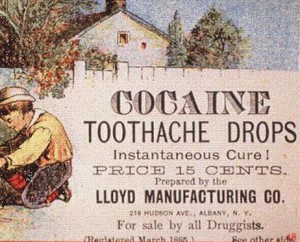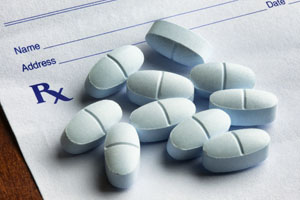It took a long time for this picture to come to light – how all too people often become addicted after taking medications that were prescribed by their doctors.
It’s not exactly a new trend, but it’s one that has seen explosive growth in the last two decades. Here’s a few milestones on the way to our current epidemic:
Late 1800s: Doctors prescribed laudanum for pain, menstrual cramps, “hysteria” and many other problems. Laudanum is opium dissolved in alcohol and it created addicts.
 Turn of century: Patent medicines offered cannabis, opium, morphine, alcohol and cocaine for anything that ails you. Because the medications were “patented,” they didn’t have to disclose their ingredients. Gradually, the distribution of these drugs was brought under the control of physicians and laws controlling their possession and sale made it a little harder to become addicted.
Turn of century: Patent medicines offered cannabis, opium, morphine, alcohol and cocaine for anything that ails you. Because the medications were “patented,” they didn’t have to disclose their ingredients. Gradually, the distribution of these drugs was brought under the control of physicians and laws controlling their possession and sale made it a little harder to become addicted.
1950s: Drugs like tranquilizers (Miltowns) and barbiturates (sleeping pills) began to be more widely prescribed. Some people, like Marilyn Monroe and Judy Garland, died from overdoses.
Second half of the Twentieth Century: More and more pharmaceutical products arrived on the market or began to be more widely marketed. Anti-anxiety drugs, antidepressants, stimulants, more sleep aids and a number of painkillers were the new additions.
 Mid-1990s: The new message throughout the medical field was “pain is undertreated.” Doctors began to be told to treat pain more aggressively. The source of this message is hard to find but it made its way into every medical school and practice. Soon after, OxyContin arrived on the market. Vicodin and Lortab, both containing hydrocodone, were already there.
Mid-1990s: The new message throughout the medical field was “pain is undertreated.” Doctors began to be told to treat pain more aggressively. The source of this message is hard to find but it made its way into every medical school and practice. Soon after, OxyContin arrived on the market. Vicodin and Lortab, both containing hydrocodone, were already there.
Now we are at a point where prescription drugs are killing more than half of the people who suffer fatal drug overdoses. And very often, the people who are addicted and abusing these drugs started out by getting these pills from their doctors.
There are two very clear articles that discuss this phenomenon. Here’s a revealing excerpt from one:
Deaths from Prescription Drugs Skyrocket (From U-T, a newspaper in San Diego)
Experts said there are a variety of factors that are contributing to the abuse and overdose of prescription drugs, such as more advertising of prescription drugs, the creation of a slew of new drugs to treat depression, anxiety and attention deficit disorders; efforts by drug companies to market their products and to get doctors to prescribe them; and the structure of the medical community to where doctors have limited the time with patients, and that has…“subtly encouraged the expedient of writing a prescription.”
http://www.utsandiego.com/news/2014/nov/11/prescription-drugs-deaths-skyrocket/
Once people leave the doctor’s office with too many pills and then find that they seem to feel more relaxed about life (because they are numb) with pills than without them, they find ways to keep getting them when their prescriptions run out. That’s a very brief and simple description of the process but it’s fairly accurate.
According to statistics from the Centers for Disease Control and Prevention, 53% of all drug overdose deaths in 2012 were due to prescription drugs. Drugs that are supposed to help people get well or endure pain are killing them in great numbers.
Stimulants Widely Abused in School Settings
Here’s the other article – it’s about stimulant abuse, focusing on the problems college students have with abusing drugs like Ritalin, Adderall and Vyvanse – all stimulants. This article states that “nearly one in five” students have abused these drugs but from certain schools, estimates are higher. Some faculty estimate that 30% of their students have used these drugs and in graduate school, the figure can be even higher. These young people can fall into a reliance on these drugs to get through tough assignments or finals but because they are addictive, use can slowly become part of their daily lives.
This article is somewhat remarkable because it describes what it is like to become addicted to these stimulants and rely on them completely to get through each day. Many people talk about abusing these stimulants but few reports open up about addiction. Here’s an excerpt from this article, talking about a young college student who began using these drugs so she could keep up with studying, working and partying:
Stafford began experiencing depression, paranoia and social anxiety and became unable to communicate even with her closest loved ones, she said. “I was totally incapable of handling life,” Stafford said. “I could not manage a simple job, my class assignments or relationships. Adderall was the center of my life.”
Luckily she later went through rehab and got her life on a sober track.
There is Some Good News
The good news is that the community is getting the message. Some medical professionals are demanding that prescribing practices change to send out smaller amounts of drugs, carefully tailored to need and not, perhaps, the recommendations of manufacturers. Re-education of doctors on prescribing and identifying addictive behaviors is being recommended. Some doctors are not so quick to prescribe stimulants to students. And the Drug Enforcement Administration has held Drug Take-Back Days for the last four years to remove some of these excess pills from the market. They have collected a total of 2,411 TONS of drugs in four years.
It’s important to realize that addiction to pills and these overdose deaths didn’t just happen by themselves. There were contributing factors. And where these contributing factors can be identified, then solutions are possible.